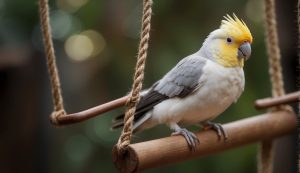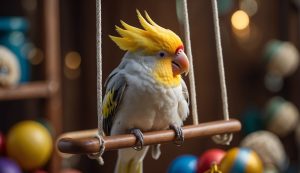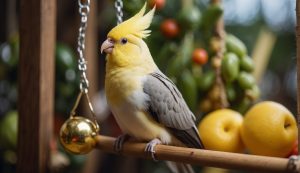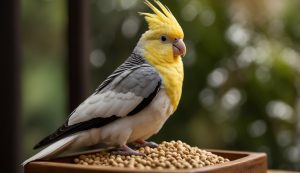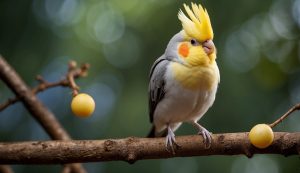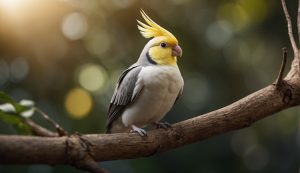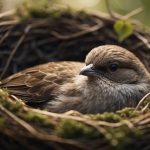How to Take Care of Newborn Cockatiel: Essential Tips for Healthy Chicks

Taking care of newborn cockatiels is a delicate process that requires attention to detail and a deep understanding of their needs.
From the moment they hatch, these charming little birds depend entirely on their caregivers for warmth, food, and protection. Creating a safe and comfortable environment is critical for their survival and overall well-being.
I find that a properly set up nesting area replicates the warmth and security that parent birds provide.
Since cockatiels are altricial, meaning they are hatched in an underdeveloped state and require care for a longer period, the responsibility on the caregiver is significant right from the start.
As a caregiver, I am always mindful of the importance of proper nutrition for the growing chicks.
Feeding newborn cockatiels involves preparing a specially-formulated hand-rearing food that is easily digestible and rich in nutrients. It’s crucial to feed them at appropriate intervals and ensure that they are steadily gaining weight.
Besides nourishment, it’s also vital to maintain good hygiene in the nesting area to prevent the spread of bacteria and infections which can be life-threatening for these fragile birds.
Key Points
- A secure and comfortable nesting space is essential for cockatiel chick development.
- Proper nutrition and feeding schedules are vital for newborn cockatiel growth.
- Maintaining cleanliness in the nesting area is critical to prevent health issues.
Table of Contents
Setting Up the Ideal Home
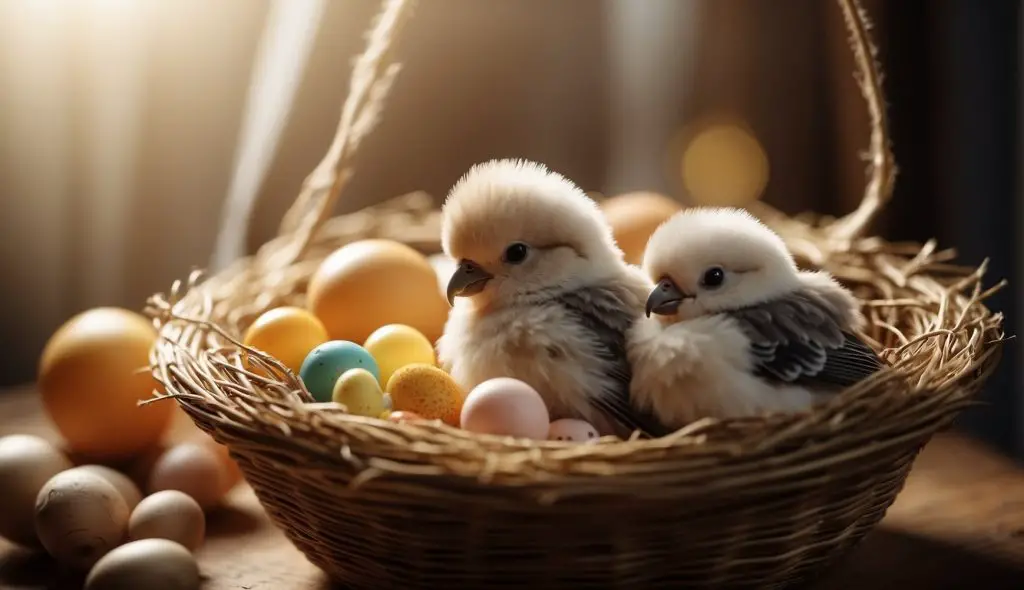
When I first brought my cockatiel home, ensuring it had a safe and comfortable environment was my top priority. I want to share how to create the ideal home for these charming birds, focusing on the cage selection and the interior setup.
Selecting the Perfect Cage
For my cockatiel, I chose a stainless steel cage because it’s durable and easy to clean. Size matters—the cage should be at least 20 inches long, 20 inches wide, and 24 inches high so the bird can stretch its wings and move around freely. Here’s a simple guideline to follow:
| Minimum Cage Size | Bar Spacing |
|---|---|
| 20″x20″x24″ | 1/2″ to 3/4″ |
Make sure the birdcage has horizontal bars; they provide essential exercise opportunities as cockatiels love to climb.
Accessorizing with Perches and Toys
Next, I furnished the cage with a variety of perches and toys, which are crucial for my cockatiel’s foot health and mental stimulation. I like to use natural branches, which offer a variety of diameters to exercise those tiny feet—a natural and therapeutic approach. Also, placing at least one therapeutic perch designed to keep nails and beaks in good condition can be beneficial. For toys, I ensure they’re bird-safe and provide plenty of enrichment—mirror toys, for example, are a hit with my little buddy.
To keep my cockatiel hydrated, I installed a dish for fresh water and made sure to change it daily. It’s essential to position perches and toys in a way that they don’t contaminate the water or food dishes with droppings.
Creating a cozy home for a cockatiel is a delightful process. These birds thrive in an environment that caters to their physical and psychological needs, so taking the time to set up their space properly is key to their wellbeing.
Feeding Your Cockatiel
When I raise a newborn cockatiel, paying close attention to its diet is crucial, as proper nutrition is fundamental for healthy growth and development.
Understanding Nutrition Needs
For my baby cockatiel, I know that proper feeding is critical from the start. Initially, baby cockatiels require hand-feeding formulas that are specially designed to meet the nutritional needs of growing chicks. As they mature, I transition them to a balanced diet that consists mainly of high-quality pellets supplemented with a variety of fresh fruits and vegetables. I ensure they get the right balance:
- Pellets: They should make up about 75-80% of the bird’s total diet.
- Fresh Veggies & Fruits: The remaining 20-25% can be fresh produce.
I am careful with the weight and growth progress of my cockatiel, making adjustments as needed.
Introducing Solids and Fresh Foods
Once my baby cockatiel is ready for solids, I introduce them slowly. Here’s how I incorporate them into the diet:
- Start with easy-to-eat solids: Millet is often a favorite for young cockatiels.
- Mix in some veggies: Soft vegetables like cooked carrots or broccoli are nutritious.
- Include fruits as a treat: Pieces of apple or pear are great, but I offer these sparingly due to the high sugar content.
- Ensure fresh water is always available: Hydration is key alongside solid foods.
I keep a close watch on how my cockatiel reacts to new foods and I make sure that changes in the diet don’t cause digestive upset or impact growth negatively.
Health and Hygiene
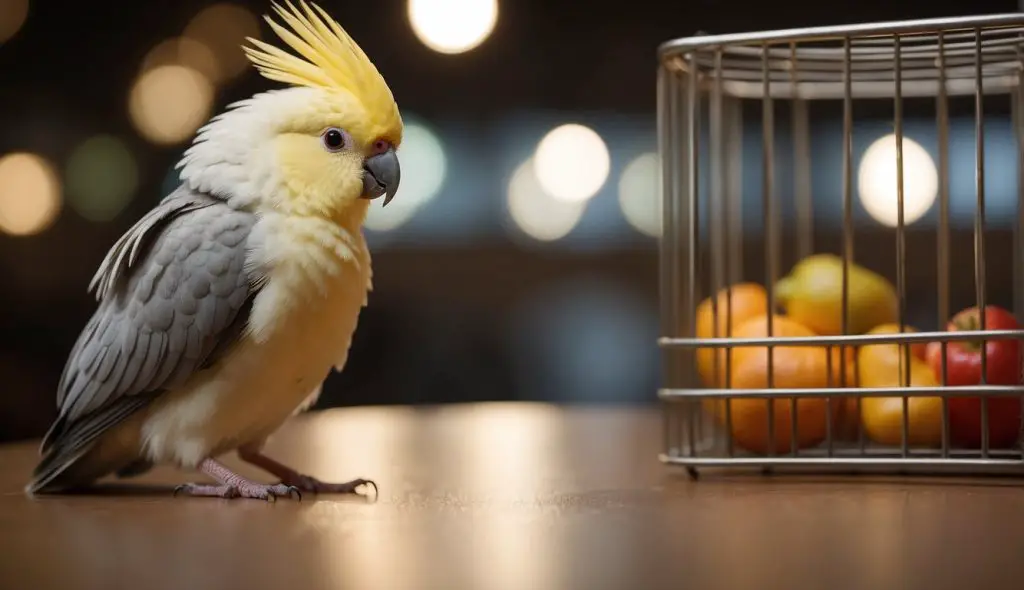
Ensuring your newborn cockatiel’s health and hygiene is critical. I focus on maintaining strict cleanliness and regular avian veterinary check-ups to prevent health issues.
Daily Cleaning Routines
Every day, I start by replacing the lining of the bird’s cage to eliminate any waste. It’s essential to sanitize the food and water containers with a mild dish soap, rinsing them thoroughly to avoid any soap residue that could make my cockatiel sick. Toys and perches also need a daily wipe to keep them free from droppings, using avian-safe cleaning supplies.
Here’s a brief checklist for daily cleaning:
- Cage lining: Replace daily.
- Food and water dishes: Wash and refill.
- Toys and perches: Wipe down with a damp cloth; inspect for damage.
- Cage tray and grate: Clean with a suitable disinfectant.
Scheduling Regular Health Check-Ups
For my cockatiel’s long-term health, scheduling monthly check-ups with an avian veterinarian is a must. During these visits, the vet checks for common illnesses, looks at weight, feather quality, and provides necessary vaccinations. Keeping a close eye on my bird’s behavior daily helps me identify any signs of illness early, which is crucial for a prompt and successful treatment.
Remember, consistency is key in protecting your newborn cockatiel’s health.
Behavior and Training
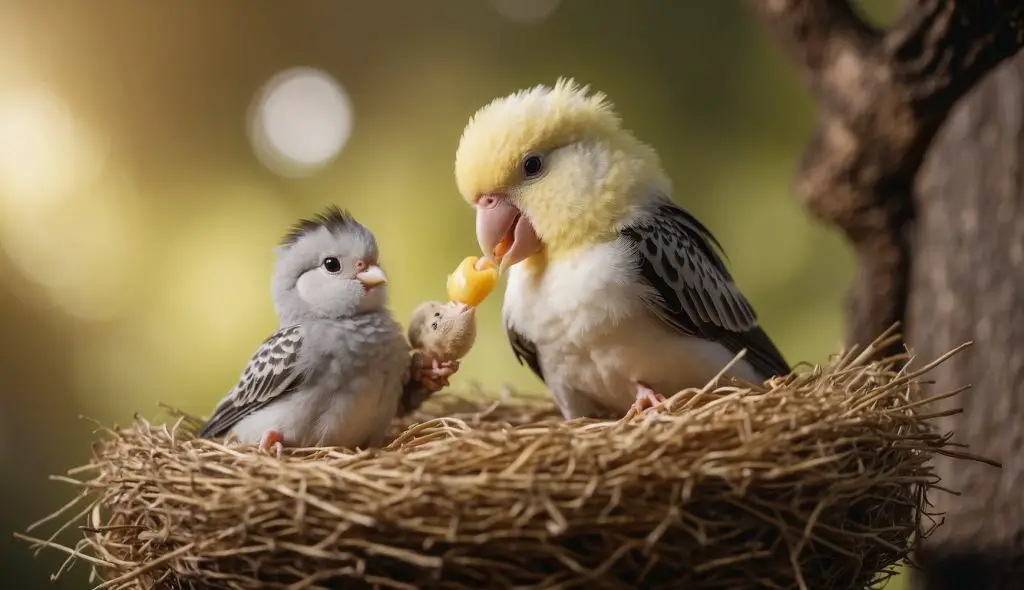
In my experience, the correct approach to behavior and training is crucial for a newborn cockatiel’s well-being. I’ll guide you through essential methods to ensure your feathered companion thrives socially and behaviorally.
Socialization and Companionship
From the start, I make sure my cockatiel feels like part of the family by frequently interacting with them. Socialization is key; it helps prevent unwanted behaviors like excessive noise or aggression. Here’s how I start:
- Daily Interaction: Spend at least 2 hours a day with your bird to build trust.
- Family Introduction: Introduce them to all family members but avoid overwhelming them.
- Multiple Contacts: Allow them to be comfortable with more than one person to prevent excessive attachment to a single individual.
Remember, cockatiels need social attention to remain mentally healthy and happy.
Taming and Teaching Tricks
Next, I focus on training my cockatiel to follow simple commands and maybe teach them a few tricks. The process should always be gentle and rewarding. Here’s my approach:
- Stepping Up: Teach them to step onto your finger when prompted. Always reward with a treat.
- Talking and Vocalization: Encourage talking by speaking to them in a clear, cheerful tone. Vocal rewards can also be beneficial.
- Reward System: Use a consistent reward system for positive behavior and tricks; this can include verbal praise or a favorite treat.
When it comes to taming, I make sure to:
- Start slow to not frighten them.
- Maintain a quiet and calm demeanor to help build trust.
By providing consistent attention and a structured training routine, you’ll foster a well-behaved and socialized cockatiel.
Frequently Asked Questions
Bringing up a baby cockatiel without its mother can be challenging, but with the right knowledge and preparation, it can also be a fulfilling experience. I’ll cover some essential care tips to ensure your feathered friend thrives.
What should I feed a baby cockatiel that has no mother?
In absence of their mother, baby cockatiels require a commercial hand-rearing formula designed specifically for parrot chicks. It’s crucial to follow the mixing and feeding instructions provided by the manufacturer to meet the chick’s nutritional needs.
At what age should I stop hand feeding my cockatiel chick?
Typically, cockatiel chicks can be weaned off hand feeding between 4 to 6 weeks old. Monitoring their willingness to eat solid foods and their weight is important during this period to ensure they are ready for the transition.
How can I effectively use a syringe to feed a baby cockatiel?
When using a syringe, make sure the formula is at a safe, warm temperature and feed the chick gently. It’s vital to allow the baby to dictate the pace to reduce the risk of aspiration and ensure they’re actually swallowing the formula.
What are the growth stages of cockatiel chicks?
Cockatiel chicks go through several growth stages, starting from hatching, pin feather development, fledging around 4 weeks, and weaning by 8 to 10 weeks. Monitoring these stages helps in understanding their care and dietary requirements.
What is the ideal way to maintain proper warmth for a newborn cockatiel?
A newborn cockatiel requires external warmth until it can regulate its own body temperature. A brooder with controlled heat is ideal, and the temperature should be kept around 95°F for the first week, then gradually reduced as the chick grows.
When is it safe to start interacting with baby cockatiels?
Interaction can begin early on, much like handling for feeding, but it’s best to limit handling during the first couple of weeks to reduce stress on the chick. After they’re more active and their feathers develop, you can increase interaction for socialization.

